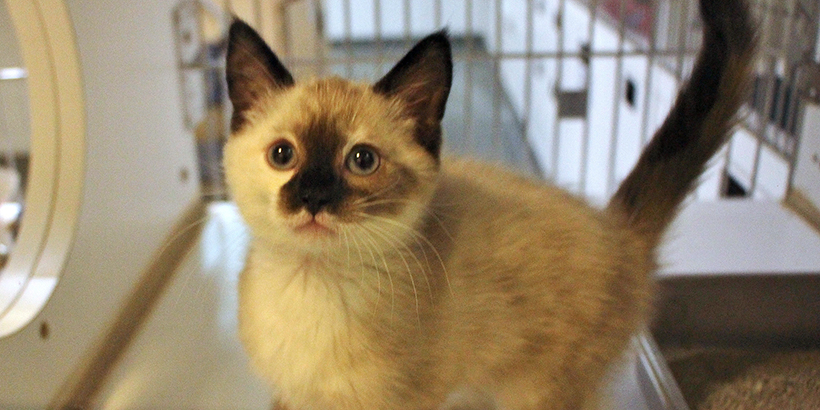
Follow these tips on how to help integrate your new pet into your family. Work slowly and be patient.
Step 1: Prepare your home:
- It’s best to have the rooms set up with your pet’s supplies and bedding before opening a cat carrier or bringing the dog in. This will reduce any stress or pressure that the animal may feel with their new housemate.
- The new pet should have an area that is inaccessible to the resident pet, which includes food, water, bedding, and a litterbox (if appropriate).
Step 2: Keep your pets separate:
- This allows your new pet to get acquainted with the scents and noises of the household, and your original pet to get used to the scent of the new animal in the home.
- Move onto step 3 when all animals look comfortable. This usually takes at least 2-4 days, but can take upwards of a few weeks with some pets.
Step 3: Introduce pets:
- Feed each pet on the opposite sides of a closed door. Start a few feet away from the door and as they eat comfortably, move the bowls closer and closer to the door. This teaches the pets that good things come when the other animal is near. This can take multiple mealtimes.
- When they are eating calmly at the door, it’s time to let them see each other. If possible, use a baby gate or glass door so that they can see each other, but cannot interact. Otherwise, crack the door. Repeat this multiple times until both animals are calm.
Tip: A second person can be feeding or playing with one of the animals and you with the other. Don’t forget to associate the other animal with fun.
Step 4: Face-to-face:
- Next is face-to-face interaction. It is best not to use the room that was set up for the animal when separated. Make this session short, keep the dog on the leash, and allow the cat to come and go as they please. Do not restrain either pet in your arms. You may be injured if they react negatively.
- The person with the dog can ask the dog for “sit” or “look” and treat them while the person with the cat can do the same with treats or toys. You are trying to redirect the animals and reduce the stress. Keep this first session short.
- Repeat this daily and use the animals’ favorite food or toys during this time.
- Try to always end on a positive note.
Step 5: Free roam time together:
- When the animals begin to look calm and redirect easily, it’s time to let them loose together with supervision.
- Leave on your dog’s leash to step on or grab if chasing occurs. If this happens:
- Make a loud noise to startle both animals, which allows you to grab the leash.
- Water can be sprayed at their back-ends to cause them to stop running.
- A baby gate can give the cat a place to escape from the dog if needed. A crate can be left open for the dog to go to if they need a break also.
- Allow them to interact and redirect them with toys or food if needed. Repeat these steps for multiple sessions until both animals seem unbothered.
Step 6: When left alone:
Even if you feel comfortable letting your animals loose together, ALWAYS have a place for your cat to retreat to. Having areas they can jump onto or hide in, or a way to leave the room, is very important. Do not allow your cat to “tease” the dog if he is crated. Keep them in separate areas. Always keep animals separated when home alone or unsupervised, until you feel you can trust them to calmly be together.
Remember, helping your pets live together peacefully can take time. Celebrate the progress they make, even if it’s baby steps, and be patient!

